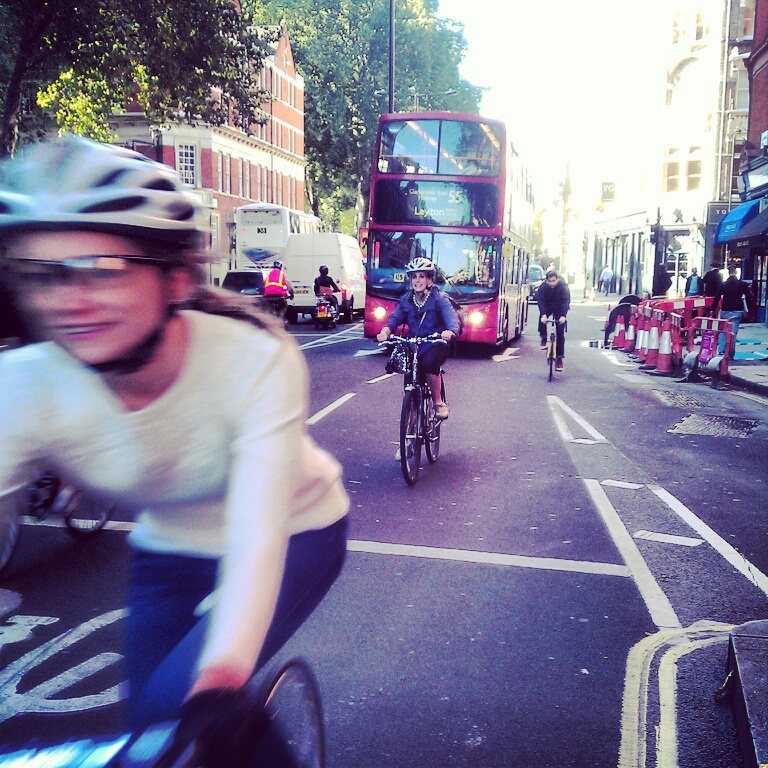We all know the premise: angry drivers honking, passing aggressively close, shouting from rolled down windows and worse, often with no apparent cause. The defining feature of these encounters is the face looking out from the car wearing a twisted mask of hate. Why? What’s happening?

True, some cyclists are d*cks,
Cyclists are just people and there’s all sorts. Some cyclists flout road rules, some to a point where they put themselves or others in harm’s way, it’s true. It’s also true that some drivers are d*cks. What is ridiculous is an assertion that because some drivers behave like this, that they all do. Because some drivers get together on quiet roads at night and pull stunts and race and terrify the elderly, they all do… The non sequitur is glaring, and yet the attitude of many drivers, or at least those angry, vocal ones, seems to be the equivalent in its weak assertions and sweeping prejudice. Cyclist don’t generally hate drivers because of the actions of a few, just as intelligent people don’t generally hate white people because of Hitler or hate Muslims because of the Rigby killers.
So why the bike hate? Here’s three ideas:
1. Cyclists can empathise with drivers because many cyclists are drivers too. We understand that each metal box contains a person with a life. Maybe that empathy is not reciprocated by drivers because they don’t ride bikes. Compounding this is the relative anonymity of a helmetted rider. Hell, some of us don’t even look human! Little by little the connection to another human being is lost. Someone who is pathologically unable to empathise with others is called a sociopath, or ‘psychopath’ in oldspeak. It would seem that some drivers become sociopathic when they see a cyclist. Perhaps they should seek treatment. Therapy can work wonders.
2. Cyclists create fear in drivers, and people hate fear. This is a compelling one for me. As a driver, I know that cyclists can sometimes behave unpredictably by virtue of their relative size and manoeuvrability, suddenly appearing out of blind spots or appearing to swerve in front of me. I will feel a jolt of adrenaline, a momentary fear that I could have hit that cyclist. I suspect that in this moment of fear lies the seed of hatred. Humans throughout history have often channelled fear into hate and aggression; animals do it, too. Perhaps this lies at the heart of some of that bike hate.
3. Driving is stressful in a way that cycling isn’t. When I’m behind the wheel, I’m often struck by the difference in the driver experience to that of the cyclist. Sure, I’m comfy, warm and dry, I might have a friend alongside or some music on, but fundamentally I am enslaved. The car which at its birth was the very symbol of freedom and independent travel has become the opposite. On a bike, you know how long a journey takes because you’ve done it before. In a car, there are no such certainties. The driver is at the mercy of the traffic. Again and again, his momentum is lost, fuel is wasted by constant braking, caused by other vehicles and congested streets. His car or van is large and unwieldy, too cumbersome and too obstructed to allow him to express his desire to be free, his natural wish to get where he wants to go. This causes him stress. Most of the time, this is contained and managed. When I’m riding, I’m often amazed at how calm most drivers look when stuck in traffic. They are resigned, not calm. The stress is there, rushing to the surface in incidents of road rage should another driver act foolishly. Into this picture swoops the cyclist, unfettered by tons of steel, blissfully free, passing the queues of traffic apparently without a care in the world. The driver looks out, feels envy, angry at the injustice that not every road user is subject to the same enslavement. It’s not fair. He sees the cyclist as a two-wheeled queue-jumper, and everybody hates queue-jumpers, no?

Making Contact
I believe the problem of angry drivers will persist as long as there are drivers who don’t ever cycle, cyclists who give drivers the fear, and congested roads creating suppressed frustration. The first of these will shift as more drivers choose bike. This is already happening. The second can be mitigated, though not altogether, by the way we ride – we need to empathise with that driver – be as predictable as we can be, signal, make eye contact, hold our line; the same stuff we expect from our ride buddies in the pack on race day or club run. We should avoid creating fear in the drivers we share the road with. The third factor, those congested roads, that enslaved driver stuck with no control or wings to fly? Well, that’s mitigated by the first. The bike is the solution, not the problem. Bon velo.
Feature by Ben Ackland

Leave a Reply